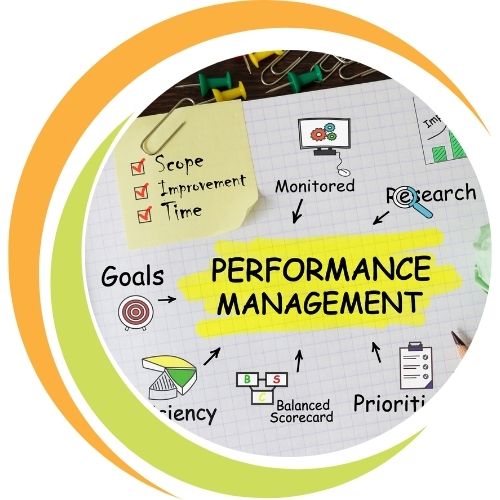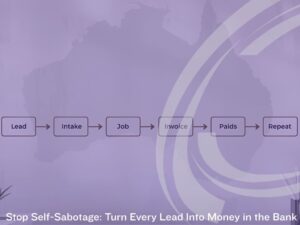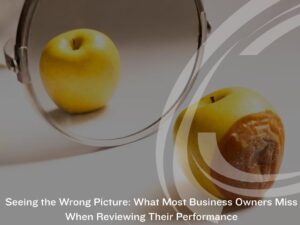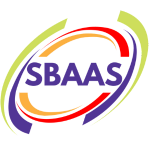Change That Sticks-Why Transformations Fail and How to Fix Them
Australian small and medium businesses operate in a landscape that never stands still. Customer expectations rise. Input costs shift. Technology evolves. The pace is relentless, which means owners and managers run improvement work almost constantly. The problem is not a lack of ambition. The problem is that many initiatives deliver less than planned or fade after launch. That is why change management for SMEs matters. It turns good intentions into results that last.
This article explains why change efforts often fail, then sets out simple moves that work in real businesses with tight budgets and busy teams. It focuses on transformation governance, stakeholder communication, and capability building because these are the levers that stick. It also anchors every recommendation in the Australian context while acknowledging global evidence. If you want change management for SMEs that delivers benefits without bureaucracy, you are in the right place.
Change fatigue is a real risk. People are already doing more with less. Even smart changes can feel like an extra load if they arrive without clarity or support. Strong leaders design their initiatives with that reality in mind. They lean into transparent governance, open dialogue, practical training, and a cadence of measurement. In other words, they practise change management for SMEs that respects time, attention, and capacity.
The most common failure modes in SME change
Every stalled project tends to share a familiar set of issues. Knowing these patterns lets you act early. The following seven failure modes show up again and again in Australian SMEs.
- Objectives are fuzzy, and benefits have no owner
Teams get busy, but outcomes remain vague. People chase activity rather than results. Benefits sit on a slide with no one named to deliver them. Effective change management for SMEs fixes this by writing a one-page outcome statement and a benefits map with owners from day one.
- Adoption is an afterthought
Delivery gets all the attention. Adoption and usage get a cursory mention. Without adoption, benefits do not land. Practical change management for SMEs treats the people side as a critical path item with time, budget, and leadership focus.
- Communication is broadcast-only
Updates are sent, yet concerns remain unaddressed. People want to ask questions and help shape decisions. A broadcast-only approach breeds resistance. The answer within change management for SMEs is two-way communication with forums, quick demos, and clear feedback loops.
- Roles blur and decisions stall
Smaller firms depend on a few capable people. During change, those people wear too many hats. Decisions slow. Ownership blurs. Simple transformation governance gives everyone clarity and shortens cycle times. This is the practical heart of change management for SMEs.
- Skills are requested but not built
New tools arrive. New processes are announced. Little time is given to practice. Capability stalls. Sustained capability building is a cornerstone of change management for SMEs because people, not software, create value.
- Progress is not measured
If you cannot see adoption and outcomes, you cannot steer. Teams report on tasks rather than results. Lightweight metrics are part of good change management for SMEs, and they can be kept simple.
- Change fatigue is ignored
When everything is urgent, nothing feels achievable. Leaders who pace work, sequence initiatives, and create early wins build confidence. That leadership stance is core to change management for SMEs.

Governance structures that remove ambiguity
Good governance is not red tape. It is clarity. It defines who decides, who owns benefits, and how issues get unblocked. The right structure for an SME is lean, human, and fast.
Right-sized roles
- Sponsor
Owns the business case and protects the team from noise. Sets priorities and removes barriers. - Change owner
Accountable for adoption and benefits in the line of business. This is often a general manager or operations lead. Assigning this role is a defining move in change management for SMEs. - Project lead
Coordinates delivery, manages scope and risks, and keeps stakeholders aligned. - Change champions
Respected staff who test usability, surface concerns, and share wins with peers. - Advisor
External support from Management Consulting when specialist capability is needed for a short burst.
Decision rhythm that keeps work moving
- Weekly 30-minute stand-up for the project lead and change owner to unblock delivery
- Fortnightly sponsor checkpoint to confirm resources and resolve decisions
- Monthly benefits review focused on adoption, usage, and outcomes
Minimal artefacts that work
- One-page charter covering outcome, scope, timeline, and decision rights
- Benefits map with baseline, target, metric, and named owner
- Stakeholder plan by audience, message, channel, and timing
- Risk register listing the top five to ten risks with mitigations and owners
These basics scale. A simple structure like this reduces confusion and lifts speed. More importantly, it supports the cultural tone you want. People know who to ask and how to raise issues. That is the point of transformation governance within change management for SMEs.
If your team would benefit from a tailored governance framework, see SBAAS Governance and Risk services.

Communication that reduces resistance
Most resistance is not stubbornness. It is information. It signals confusion, fear of loss, or practical barriers. When you treat resistance as insight, you find the path to adoption.
Use two-way channels
Invite questions. Run short demos. Test changes with small groups first. Feed insights into the plan. This is practical change management for SMEs. It builds trust and improves design quality.
Make managers the message
People trust their direct manager. Equip managers with short talk tracks, a simple timeline, and answers to likely questions. Coach them to ask three questions in each meeting:
- What will be easier?
- What will be harder?
- What help is needed?
These habits place change management for SMEs where it matters most, in day-to-day conversations.
Tell a clear value story
Explain the customer problem and the employee benefit. Outline how success will be measured. Keep messages plain and consistent. Repeat them across channels. Repetition is not noise when people are busy.
Bring order to your updates
Use a short weekly note. Host team Q&A. Provide a visible countdown to go live. Close the loop on feedback within a week. Consistency signals care. It also shows that change management for SMEs is being run with discipline.
For support in aligning communication with Australian workplace standards, SBAAS HR and IR Services can help. Capability and training that sustain new ways of working
New processes and systems only deliver value when people can use them confidently. In a tight labour market, upskilling is often faster and more affordable than hiring. Capability building must be targeted and practical.
Design training around real work
Focus on the few behaviours that drive most of the benefit. Use short, practice-rich sessions. Provide job aids, quick videos, and step-by-step guides that sit beside the task. This is hands-on change management for SMEs rather than theory.
Build standard work
Document the best-known method for critical tasks. Standard work reduces variation and makes training easier. It is especially helpful in small firms where roles overlap. Embedding standard work is a proven move in change management for SMEs.
Link capability to performance
Give people time to practise. Recognise progress. Back managers to coach. Promotion and recognition should reflect the new way of working. When people see that careers move with the change, adoption rises. That is why capability building is not a side activity within change management for SMEs. It is the engine.
SBAAS Training Services delivers practical change leadership and team enablement that fits your systems and your schedule.
Metrics and progress reviews
You do not need a dashboard farm. You need a small set of indicators that tell you if the change is landing and if the value is real.
Adoption, usage, and proficiency
Adoption tells you how many people have switched. Usage shows frequency and depth by role. Proficiency reveals error rates, cycle times, and quality against the new standard. These metrics are the early warning system in change management for SMEs.
Outcomes and benefits
Track operational improvements such as faster quotes, fewer defects, or improved on-time delivery. Track financial benefits like margin lift or lower operating costs. Track customer outcomes such as satisfaction and retention. Benefits realisation is easier when you set a baseline, a target, and a named owner. This is structured change management for SMEs without heavy overhead.
Change health
Look at readiness, risk, and capacity. Readiness captures sentiment and confidence. Risk shows your top threats and whether they are growing or shrinking. Capacity checks the workload and any collisions across teams. With these three, you can decide what to stop, start, and continue. The clarity supports effective change management for SMEs.
Review rhythm
Weekly adoption check. Monthly benefits review. Quarterly assurance that the operating model has truly shifted. Short, regular reviews help managers act early. They also signal that change management for SMEs is being run as a business discipline.
Integrating change into performance management
Change will not stick if the performance system rewards the old way. Aligning goals, feedback, and recognition with the new behaviours sends a simple message. This is how we work now.
Make it real in four moves
- Update position descriptions and KPIs to reflect the new behaviours
- Add two change objectives to each impacted person’s plan for this quarter and next
- Equip managers to run short weekly check-ins focused on practice and support
- Recognise early wins and manage persistent underperformance with a fair, written process
When performance management and change align, teams know what good looks like and feel supported to reach it. This is practical, lawful, people-centred change management for SMEs in the Australian setting. SBAAS HR and IR Services can help you embed these elements.

Remediation checklist for projects at risk
If your initiative is wobbling, use this triage. It restores focus and momentum without adding complexity. It is built for leaders who want change management for SMEs that gets back on track fast.
In 48 hours
- Re-state the outcome in one sentence everyone can repeat
- Name a single change owner for adoption and benefits
- List the three benefits with baseline and target on one page
- Map the five most impacted roles and what changes for each
- Start a daily stand-up for two weeks to remove blockers
In two weeks
- Complete a stakeholder plan with messages and channels
- Run two team workshops to surface risks and simplifications
- Publish standard work for the first two critical processes
- Deliver bite-sized training for managers and front-line users
- Set three adoption metrics and three outcome metrics with owners
In 30 days
- Deliver one visible win that proves value and rebuilds belief
- Hold a benefits review with the sponsor and change owner
- Decide what to stop or delay to reduce collisions
- Update performance plans to reflect the new way of working
- Confirm the next two milestones and the resourcing required
SBAAS Operational Excellence can facilitate this remediation sprint and leave you with templates you can reuse.

Metrics and progress reviews for the roadmap
Your change portfolio needs a simple roadmap that your leadership team can understand at a glance. Integrate change into the annual and quarterly planning cycle so priorities do not collide.
- Align initiatives to a few strategic outcomes
- Sequence work by capacity, not just urgency
- Tie funding to benefits realisation reviews
- Use consistent measures across projects so comparisons are fair
This is the portfolio view of change management for SMEs. It keeps the big picture steady while teams deliver.
For roadmap integration and prioritisation support, explore SBAAS Strategy.
FAQ
What is the minimum governance needed for a small change program?
You need a sponsor, a named change owner, a project lead, and one or two champions. Hold a short weekly stand-up to unblock work. Meet the sponsor each fortnight to confirm decisions and resources. Review benefits each month. Keep artefacts to one-page versions of a charter, benefits map, stakeholder plan, and risk register. That is right-sized change management for SMEs.
How do we measure adoption and benefits?
Track adoption, usage, and proficiency by role. Track operational, financial, and customer outcomes against a baseline and target with a named owner. Check adoption weekly and outcomes monthly. These rhythms keep value visible. They are the backbone of disciplined change management for SMEs.
What skills must managers build to sustain change?
Focus on communication, coaching, and stakeholder management. Add basic data literacy so managers can read adoption and outcome metrics. Build these skills with short practice-rich sessions and on-the-job support. This is the human engine of change management for SMEs.
Service links
- Governance and Risk: change governance frameworks
https://sbaas.com.au/consulting-services/governance-risk/ - HR and IR Services: role clarity and performance alignment
https://sbaas.com.au/consulting-services/hr-ir-services/ - Training: change leadership training
https://sbaas.com.au/consulting-services/training/ - Operational Excellence: process standard work
https://sbaas.com.au/consulting-services/operational-excellence/ - Strategy: roadmap integration
https://sbaas.com.au/consulting-services/strategy/
Final thoughts and next steps
Change that sticks is not luck. It comes from a small set of disciplines applied with care. Clarify roles and decision rights. Open two-way communication. Build capability tied to real work. Measure what matters and align performance with the new behaviours. Do these consistently, and you will practise change management for SMEs that delivers benefits now and sustains them over time.
If you want help to tailor this blueprint to your business, book an appointment to discuss your needs or learn more about our approach on the SBAAS About Us page.
Sources
- McKinsey & Company, The State of Organizations 2023 – https://www.mckinsey.com/capabilities/people-and-organizational-performance/our-insights/the-state-of-organizations-2023
- McKinsey & Company, How capability building can power transformation – https://www.mckinsey.com/capabilities/transformation/our-insights/how-capability-building-can-power-transformation
- McKinsey & Company, The science behind successful organisational transformations – https://www.mckinsey.com/capabilities/people-and-organizational-performance/our-insights/successful-transformations
- Prosci, The correlation between change management and project success – https://www.prosci.com/blog/the-correlation-between-change-management-and-project-success
- Prosci, Metrics for measuring change management – https://www.prosci.com/blog/metrics-for-measuring-change-management
- Prosci, Three factors of change that define or constrain project ROI – https://www.prosci.com/blog/3-factors-of-change-which-define-or-constrain-project-roi
- Project Management Institute, Benefits Realization Management – https://www.pmi.org/standards/benefits-realization
- Project Management Institute, Pulse of the Profession 2023 – https://www.pmi.org/-/media/pmi/documents/public/pdf/learning/thought-leadership/pmi-pulse-of-the-profession-2023-report.pdf
- Gartner, This new strategy could be your ticket to change management success – https://www.gartner.com/en/articles/this-new-strategy-could-be-your-ticket-to-change-management-success
- Harvard Business Review, Employees are losing patience with change initiatives – https://hbr.org/2023/05/employees-are-losing-patience-with-change-initiatives
- Australian Bureau of Statistics, Counts of Australian Businesses – https://www.abs.gov.au/statistics/economy/business-indicators
- Australian Institute of Company Directors, Governance for small business – https://www.aicd.com.au/corporate-governance-sectors/small-business.html
- Fair Work Ombudsman, Managing performance and warnings – https://www.fairwork.gov.au/employment-conditions/performance-in-the-workplace
- Fair Work Ombudsman, Managing underperformance – https://www.fairwork.gov.au/tools-and-resources/best-practice-guides/managing-underperformance
- Lean Enterprise Institute, Standardised work – https://www.lean.org/lexicon-terms/standardized-work/
- UK Government, Project Delivery guidance and functional standard – https://www.gov.uk/government/collections/project-delivery-functional-standard-and-guidance

Eric Allgood is the Managing Director of SBAAS and brings over two decades of experience in corporate guidance, with a focus on governance and risk, crisis management, industrial relations, and sustainability.
He founded SBAAS in 2019 to extend his corporate strategies to small businesses, quickly becoming a vital support. His background in IR, governance and risk management, combined with his crisis management skills, has enabled businesses to navigate challenges effectively.
Eric’s commitment to sustainability shapes his approach to fostering inclusive and ethical practices within organisations. His strategic acumen and dedication to sustainable growth have positioned SBAAS as a leader in supporting small businesses through integrity and resilience.
Qualifications:
- Master of Business Law
- MBA (USA)
- Graduate Certificate of Business Administration
- Graduate Certificate of Training and Development
- Diploma of Psychology (University of Warwickshire)
- Bachelor of Applied Management
Memberships:
- Small Business Association of Australia –
International Think Tank Member and Sponsor - Australian Institute of Company Directors – MAICD
- Institute of Community Directors Australia – ICDA
- Australian Human Resource Institute – CAHRI
Our Consulting Services

Management Consulting
Compliance & Risk

Professional Writing Services
Consistency in Communication

Small Business Consulting
Sustainable Businesses

Start-ups
Set-up for Success
Further reading

Pragmatism Wins: How Australian Businesses Turn AI Hype Into Real Results
Australian organisations are moving beyond experiments. This article shows how Australian businesses across all sectors and sizes can scale value, manage risk, and boost productivity with pragmatic AI.

Stop Self-Sabotage: Turn Every Lead Into Money in the Bank
Winning work is hard. Losing time and cash to clunky admin is optional. This guide shows how to design an automated business process that captures leads, books jobs, issues invoices with timely reminders, and keeps clients returning. Plain English, practical steps, and a sharp focus on simplification, speed, and cash flow.

Seeing the Wrong Picture: What Most Business Owners Miss When Reviewing Their Performance
Business owners aren’t short on data, but many are missing what matters most. Discover what most business owners miss when reviewing their performance and how to shift from surface-level tracking to strategic insight.

Navigating Economic Uncertainty: A Roadmap for Australian Small Businesses
Discover how global economic shifts and local consumer sentiment are reshaping Australian small businesses. Equip yourself with actionable insights and strategies to thrive amidst uncertainty.

The Hidden Cost of Success: How Leadership Burnout is Crippling Australia’s Small Business Sector
Leadership burnout is rising fast across Australia’s small business sector. This article unpacks what it looks like, what causes it, and how SME leaders can protect themselves and their teams before the damage becomes irreversible.

From Centre to the Edges: A Practical Guide to the Political Left to Right Scale for Australian Business
We hear “far left” and “far right” every day. This guide starts in the middle, explains each step to the edges, and shows what the political left-to-right scale means for Australian enterprises of all sizes.
SBAAS Events
What our clients are saying about us
Posted onTrustindex verifies that the original source of the review is Google. Eric and Trudi recently wrote a tender for me and the experience was amazing. I went into the process in a state of complete overwhelm. Eric was able to break it down into achievable chunks for me, and reassure me that I had a great service and business model to offer. I came out the other end of the process with all of my business policies, a better understanding of my offer, and a foundation to launch all future tender applications. Eric took all of my information and turned it into a pretty package that I could market.Posted onTrustindex verifies that the original source of the review is Google. SBAAS were fantastic to work with on a detail-heavy tender with a tight turnaround. Their team helped us shape and compile our content to deliver a strong, high-quality submission. Highly recommend SBAAS to anyone looking for strategic support with tender development, with a touch of good humour along the way.Posted onTrustindex verifies that the original source of the review is Google. We engaged SBAAS to support the development of a complex government tender and couldn’t be happier with the outcome. SBAAS' professionalism, attention to detail, and ability to quickly understand our business and translate that into a compelling, well-structured submission were exceptional. They were responsive, collaborative, and a genuine extension of our team. Highly recommend for anyone looking for strategic, high-quality bid and tender writing support.Posted onTrustindex verifies that the original source of the review is Google. Eric and Team go above and beyond. They do an excellent job with researching to get everything that is legally required for Policies and QMS. Would recommend them them to everyone especially all the bookkeepers and accountants. Thank you guys, and extreme job. Love you work as always. 😀Posted onTrustindex verifies that the original source of the review is Google. Extremely professional and far exceeded by expectations. I will definitely be using their services again and highly recommend them. They have a spirit of excellence in everything they do which shines through when dealing with them.Posted onTrustindex verifies that the original source of the review is Google. Impressive consulting experience! The team is highly professional, with a hands-on approach that adds real value. Their dedication and expertise truly stand out. Highly recommended!Posted onTrustindex verifies that the original source of the review is Google. Super knowledgable company that provides great advice and support for small business. Super friendly, highly recommend.Posted onTrustindex verifies that the original source of the review is Google. As a new business owner, I recognised the value in seeking a business coach to help me achieve significant goals. After a disappointing experience with a previous coach, I was initially hesitant to try again. However, after seeing SBAAS's complimentary action plan, I thought there was no harm in investigating. Eric quickly identified gaps in my systems, and through a few targeted adjustments, I saw an immediate increase in both leads and sales. These changes also improved profitability—highlighting a major issue I hadn’t been aware of, as my previous coach’s guidance had me working for less than $7 per hour! I look forward to continuing working with Eric.
